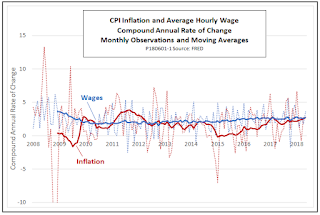Exit polls from the recent midterm election suggest over 40
percent of voters consider health care as the top issue facing the country. Yet
after a unified Republican government tried and failed to repeal and replace
the Affordable Care Act, the conservative vision for health care reform remains
something of an open question.
Here at the Niskanen Center, senior fellow Ed Dolan has been
beating the drum for the reform path known as Universal Catastrophic Coverage
(UCC) for more than two years. But not everyone agrees. That’s why we invited
Chris Pope, a senior fellow of the Manhattan
Institute and formidable conservative health care policy thinker,
to join Ed Dolan in a debate.
Be it resolved:
Universal catastrophic coverage is a reasonable path to
universal and affordable health care.
PRO — Ed Dolan
People have many basic needs, including food, shelter,
education, and access to health care, which, if unsatisfied, can make our
treasured rights to life, liberty, and pursuit of happiness meaningless. Of
these, health care poses unique problems for public policy.
To understand why, imagine a society in which no one’s
resources fall below the poverty level. Regardless of whether those resources
come from a state-sponsored universal basic income or from some combination of
work, family support, and private charity, I argue that such a society could
adequately meet needs for food, shelter, and so on but not health care.
There are two reasons for that. One is the highly skewed distribution of
the demand for health care services. In the United States, the healthiest half
of the population account for just 3 percent of services consumed, while the
sickest 5 percent account for 50 percent. For comparison, if the need for food
were distributed similarly, half the population would need just 120 calories in
their daily diet (one small potato), while the hungriest 5 percent would starve
on anything less than 20,000 calories (35 Big Macs). For the top 5 percent,
health care consumption exceeds the national median income.
The second reason health care is unique is its
uninsurability. To be commercially insurable, a risk must be unpredictable and
an actuarially fair premium must be affordable to the insured. Because of
pre-existing conditions and advances in genetic testing, health risks are
highly predictable. As a result, for many risk-prone individuals, actuarially
fair premiums can exceed income.
The combination of skewed need for services and
uninsurability means there is no simple market mechanism that would give
everyone access to health care. That leaves us either with a nation of medical
haves and have-nots, or a major role for government.































